The Price of Wastewater: A Comparison of Sewer Rates in 30 U.S. Cities
Following Circle of Blue’s survey of water prices, we examine the wastewater costs of the same 30 major cities.
By Brett Walton
Circle of Blue
Households in American cities building new sewage treatment infrastructure pay up to 15 times more on their sewer bills than cities with old wastewater treatment systems, according to a Circle of Blue survey of residential wastewater rates in 30 major U.S. cities.
But customers in cities with old systems are likely to soon see their rates rise. The U.S. Environmental Protection Agency announced in July that it is considering stricter water quality regulations. Final revisions to the current standards, which were set in 1983, will not come until next summer. If wastewater treatment plants are forced to overhaul their systems, customers could see significantly larger numbers on their sewer bills.
The Circle of Blue survey found that a family of four using 100 gallons per person per day pays $13.92 per month in Salt Lake City, which has delayed building a new wastewater treatment plant thanks to a unique billing system, compared to $208.60 per month in Atlanta, which is undergoing a $4 billion modernization and expansion.
The wastewater pricing findings complement Circle of Blue’s water pricing survey, completed in April. Circle of Blue calculated sewer charges based on rates in July 2010 for the same cities, and used the combined results to create a complete picture of the price of water in the nation’s largest metropolitan areas.
The wide range for wastewater rates is explained by billing and building, that is, where a utility gets its money and how it spends it.
“Wastewater has more of a history of paying costs through property taxes [than water],” said Chris Woodcock, president of Woodcock and Associates, a Massachusetts-based consulting firm on water and wastewater rates. “That is the disparity on the low side. Also, some places charge more for high strength waste. That would cost more for large users than small users and would tend to lower the residential rates.”
That is the case in Salt Lake City, which has one of the lowest residential rates of the cities surveyed. Jim Lewis, the finance administrator for SLC Public Utilities, said that the city’s rate structure is based on the waste concentration in the water.
“Those agencies that put more waste into the system pay more,” Lewis told Circle of Blue. “That’s what unique to us.”
Most cities in the survey charge for wastewater based on winter consumption because sewer charges pay to clean what goes down the drain. And since outdoor water use is lowest in the winter, it is assumed that most residential use at that time of the year is going into the sewer system. As a result, the charges for this survey were calculated assuming winter consumption.
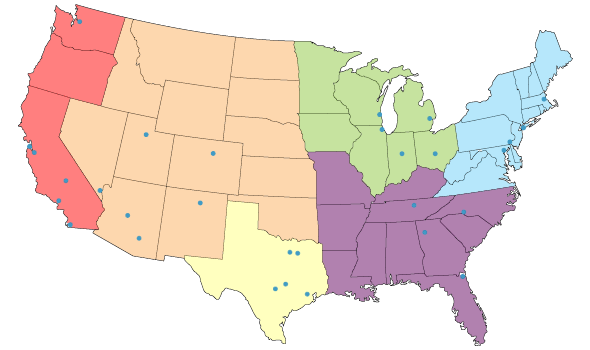
Few cities use a rate structure based on waste concentration. Most charge a uniform rate per 1,000 gallons or hundred cubic feet. Some are adopting a block pricing model similar to water charges. Block prices increase the unit price of water as consumption increases so that high-volume users are paying a higher average rate.
In Salt Lake City, the financial burden for the rate structure implemented in 2002 fell heavily on restaurants. Yet, with better maintenance and more vigilance about what goes down the drain, restaurants have decreased their sewer costs and discharge, Lewis said.
The utility noticed an increasing amount of biological oxygen demand and suspended solids in its wastewater—the two main measures of the strength of wastewater discharge. A new treatment plant was considered, but the rate restructuring caused waste concentrations to flatten, delaying the need for a new plant by 10 to 15 years, Lewis said.
Building new infrastructure is one reason wastewater costs increase—cities in the midst of capital improvements such as Atlanta and Seattle have the highest rates in the survey. While treatment plants are costly, more cities are dealing with the problem of combined sewer overflows—disentangling storm water drains from the sewer system.
“A lot of sewer systems built initially in cities combined the sewers and the street drainage,” Woodcock said. “What happens when there is a big rain storm is the combined sewage and storm water can’t be treated properly because the volume is so high and a bunch overflows untreated. As a result the government has said you can’t do that anymore and have to separate these systems. That’s been very expensive for communities that had combined systems.”
Combined sewer overflows are just one part of Atlanta’s $4.1-billion sewer system overhaul. The final bill, with interest, will be more than $7 billion, according to the Atlanta Journal-Constitution. City voters passed a one cent sales tax in 2008 to pay for part of the city’s capital improvement program, but most of the project is being paid for by rate increases.
“It’s a generational expense for a generational asset and generational benefits,” Rob Hunter, commissioner of the city’s Watershed Management Department, told the Atlanta Journal-Constitution. “Unless you want the water and sewer system to get in the condition they were in, you need to invest in it.”
These types of decisions are going to be more common in the future as cities come up against the dual pressures of decrepit infrastructure and growing service populations. With this in mind, city leaders are cautioning that cheaper, in terms of water and sewer rates, is not always best.
“Lower rates are not always a marker of success,” said Annie Kolb-Nelson, public information officer for King County Waste Water Division, which treats Seattle’s sewage. “Low rates lead to environmental degradation.”
Kolb-Nelson said King County has taken a proactive approach to its sewer system, investing $388 million between 1988 and 2005 in combined sewer overflow program and other system upgrades. The county is also building the $1.8 billion Brightwater treatment plant.
But Brightwater has been plagued by cost overruns, and is also a year and a half behind schedule. Kolb-Nelson said that current high rates will stabilize in the future once the plant begins operating in 2011.
Even though Seattle and Atlanta have taken on costly upgrades, that sentiment of public investment is absent in many cities, Woodcock said.
“We’re seeing more and more in both water and wastewater, policymakers afraid of rate increases, cutting back on repairs and replacement and putting it off to future generations. It’s sort of odd when you think about it. We wouldn’t ask our children to pay off our credit card bills, yet we’re asking them to do that with our water and sewer systems.”
Ultimately it comes down to how clean we want our water systems. A decision to remove the increasing amounts of pharmaceuticals in public water supplies would make treatment costs even higher, Woodcock said.
Brett Walton is a Seattle-based journalist for Circle of Blue. Contact Brett Walton and read more about water pricing U.S. cities on Circle of Blue.
Brett writes about agriculture, energy, infrastructure, and the politics and economics of water in the United States. He also writes the Federal Water Tap, Circle of Blue’s weekly digest of U.S. government water news. He is the winner of two Society of Environmental Journalists reporting awards, one of the top honors in American environmental journalism: first place for explanatory reporting for a series on septic system pollution in the United States(2016) and third place for beat reporting in a small market (2014). He received the Sierra Club’s Distinguished Service Award in 2018. Brett lives in Seattle, where he hikes the mountains and bakes pies. Contact Brett Walton

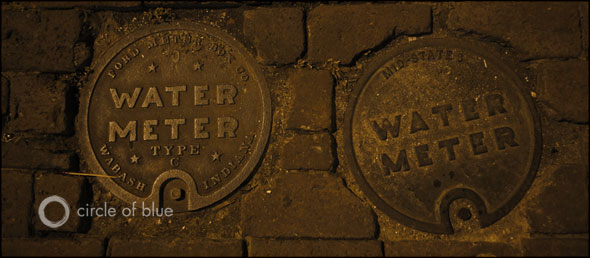
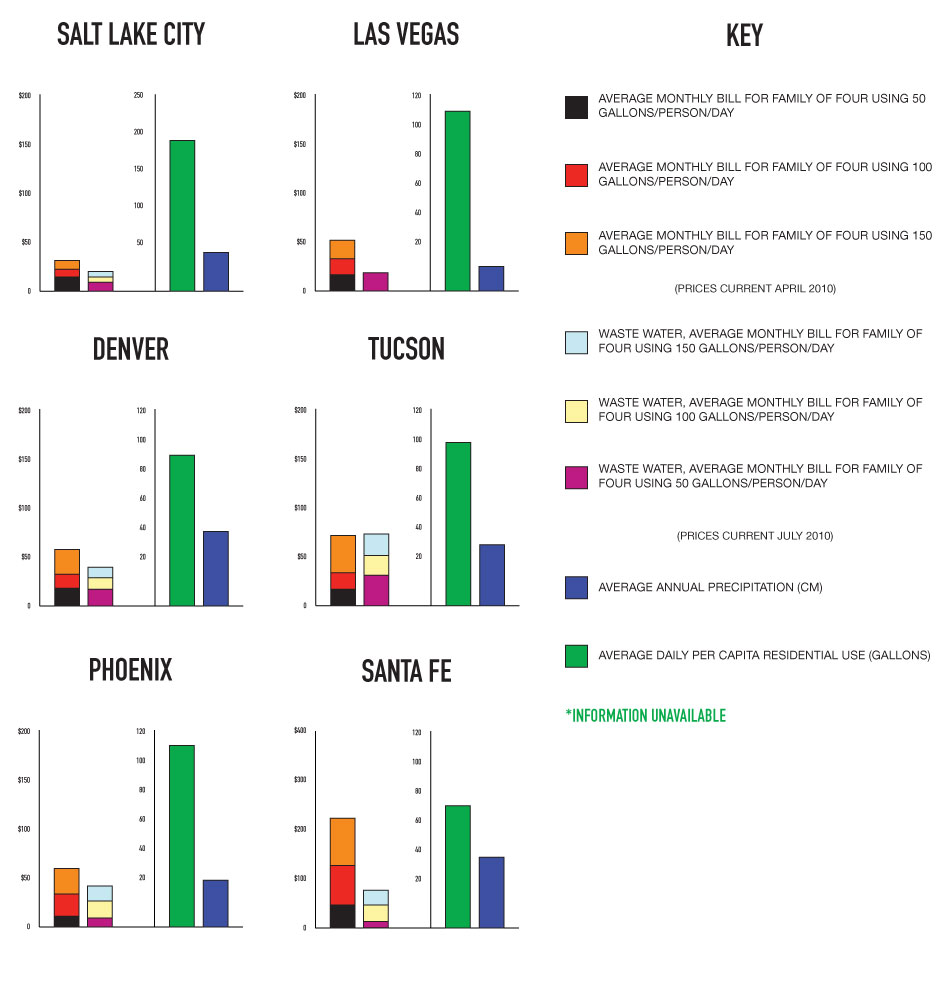


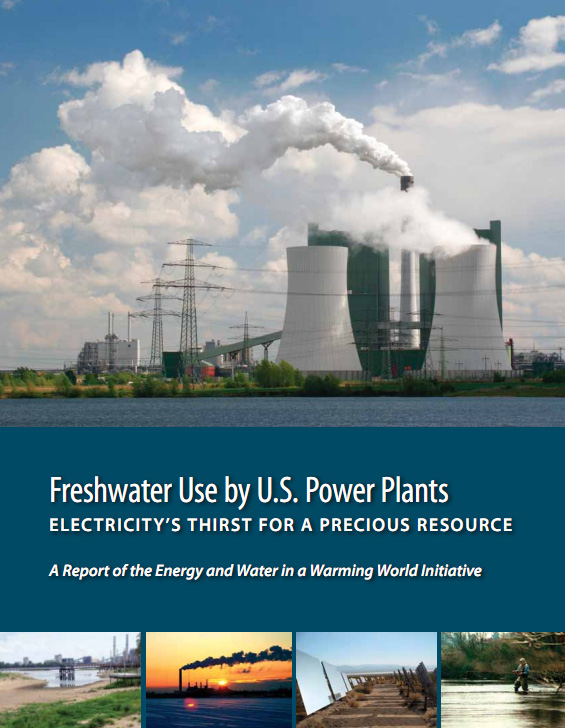
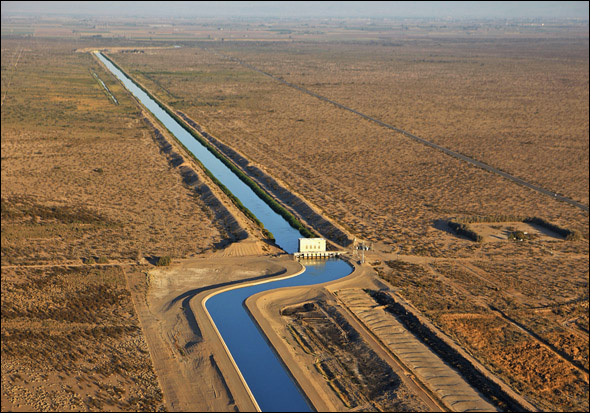
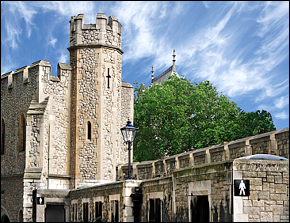

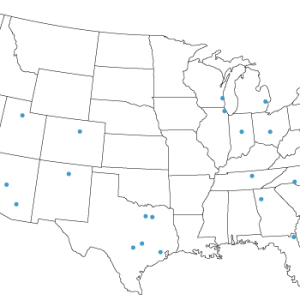
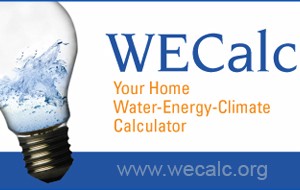
With conventional sewage treatment methods, combined sewers do have the disadvantage that during large rain storms, treatment plants are hydraulically overloaded and overflows (CSO) occur when certain flow rates are exceeded. Even with conventional treatment plants, when properly designed, overflows will only occur when flows exceed more than 3 to 5 times the average flow rates and that number can be increased during the sewer designs when needed.
There are however many reasons to favor combined sewer systems, even with conventional sewage treatment. One is that when overflows occur the system (including roads) is already flushed clean (and this water treated) and the now combined sewage and rainwater overflows that is getting into open waters is now very diluted.
Another argument of proponents of combined systems claim is that these systems are not only less expensive, but actually better for our environment, because the storm water in separated systems is not clean at all and actually needs additional treatment, while there also are many faulty connections in such systems, i.e. sewage into storm sewers and storm water into sewage sewers.
Many older cities are having combined sewer systems and are looking at very high cost to convert them into separate sewers or adding storm water treatment. For those cities especially it would behoove them to take another good look to keep their combined sewer systems and look at their obsolete existing sewage treatment, especially since the present conventional treatment systems ignored the water pollution cause by nitrogenous (urine and protein) waste. (www.petermaier.net)
As soon as the public learns that EPA never implemented the Clean Water Act and demands proper implementation of the CWA, cities will be faced having to meet the new treatment requirements, which certainly would include the treatment of nitrogenous waste, now ignored. Replacing their then obsolete sewage treatment with better sewage treatment, capable of handling the entire combined sewage and storm water collected, will not only result in less money spent, but a system much better for our environment.
It probably never will happen as bad habits die hard, including engineering habits.
A middle ground would be nice. Why must it be one extreme or the other? In Tucson I paid about $15 for a household of 2 with drip lines to trees and shrubs and a in-ground pool. In the Seattle area we paid over $100 for a family of 2 and that was without yard irrigation of any kind so my water use was at an all time low. Why clean water cost so more in Seattle vs. the desert in Tucson is another mystery. Locals I asked had no idea why waste water cost was so high but everyone paid that much or more.
The high waste water and high trash bill ($40) were compelling reasons to move into an apartment ware I paid about 1/3 the cost for the same usage. Group discount I guess.